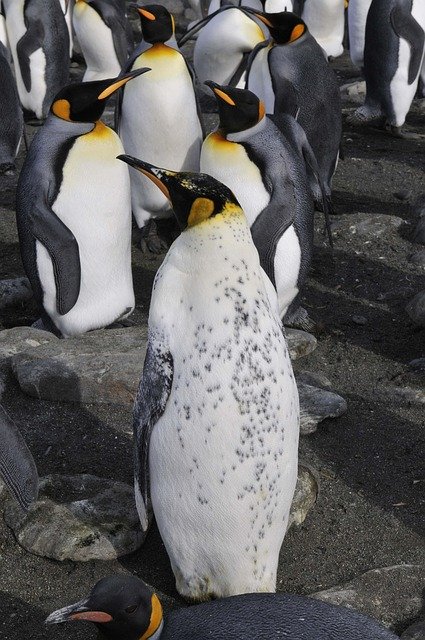"Unraveling the Social Dynamics of Penguin Colonies: How These Charming Birds Communicate and

Unraveling the Social Dynamics of Penguin Colonies: How These Charming Birds Communicate
Penguins are not only adorable creatures but also fascinating subjects of study when it comes to their social behavior and communication. Living in colonies that can number in the thousands, these birds exhibit complex social dynamics that are essential for their survival and reproduction. In this post, we will explore how penguins communicate and interact within their colonies, shedding light on their social structures and behaviors.
1. The Importance of Communication
Communication is vital for penguins, especially in the bustling environments of their colonies. It helps them:
- Identify mates: Penguins use vocalizations and physical displays to attract partners during the breeding season.
- Maintain social bonds: Close relationships among colony members are crucial for cooperative breeding and chick-rearing.
- Coordinate activities: Penguins communicate to organize foraging trips, alerting others to predators or food sources.
2. Vocalizations: The Language of Penguins
Penguins are known for their distinctive vocalizations, which vary by species. These calls serve multiple purposes:
- Mating calls: During courtship, male penguins often engage in elaborate vocal displays to attract females.
- Chick calls: Parent penguins can recognize their chicks' specific calls, allowing them to locate and care for them amidst the chaos of the colony.
- Alarm calls: In the presence of predators, penguins emit specific sounds to warn others, prompting them to take cover.
Example: The Emperor Penguin
The Emperor Penguin, the largest of all penguin species, has a unique mating call that can be heard over long distances. This vocalization is crucial for mate recognition in the vast Antarctic landscape.
3. Body Language and Visual Signals
In addition to vocalizations, penguins employ body language and visual signals to communicate:
- Posturing: Penguins may puff up their chests or bow to display dominance or submission during social interactions.
- Flipper movements: Flapping or waving their flippers can signal excitement or aggression.
- Physical proximity: The distance between individuals can indicate social hierarchy; closer proximity often signifies stronger bonds.
4. Social Structure and Hierarchy
Penguin colonies are not just random gatherings; they exhibit distinct social structures:
- Dominance hierarchies: Within a colony, certain individuals may establish dominance, influencing access to resources and mates.
- Cooperative breeding: Some species, like the Adélie penguin, engage in cooperative breeding, where non-parent individuals help raise chicks, enhancing the survival rates of the young.
5. The Role of Environmental Factors
The environment plays a significant role in shaping penguin social dynamics:
- Colony size: Larger colonies may experience more competition for resources, leading to more pronounced social hierarchies.
- Predator presence: The threat of predators can alter communication patterns, with penguins becoming more vigilant and cautious.
Conclusion
The social dynamics of penguin colonies are a testament to the complexity of animal behavior. Through vocalizations, body language, and intricate social structures, these charming birds navigate their environments and maintain their colonies. Understanding their communication methods not only enhances our appreciation for penguins but also provides insights into the evolutionary adaptations that shape social interactions in the animal kingdom.
Join the Conversation!
What fascinates you the most about penguin communication? Share your thoughts in the comments below! 🐧✨
